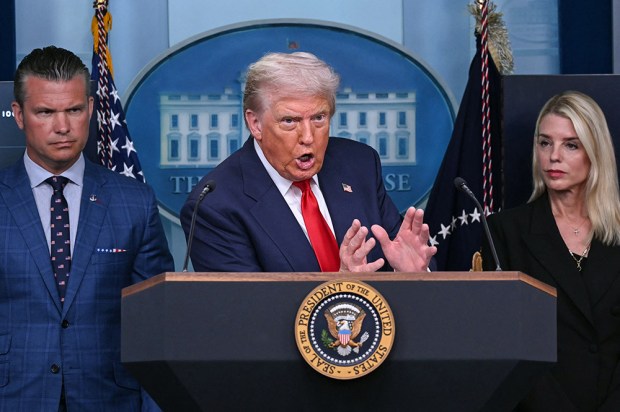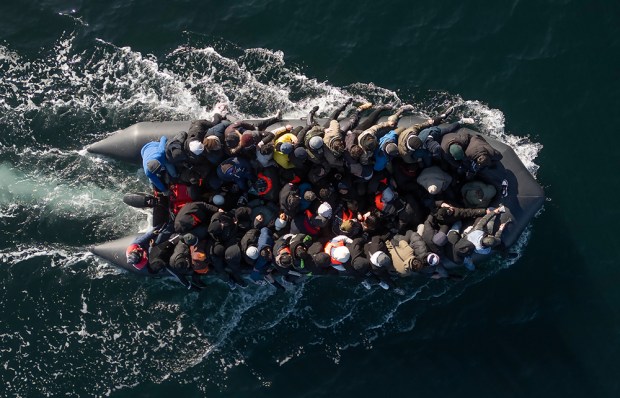When Mount Isa’s mayor, Peta MacRae, and other North Queensland leaders travelled to Canberra at the end of July to lobby federal ministers for major government handouts to keep a copper smelter in business, the trip was just one symptom of a disease infecting national economies everywhere. This is the China disease.
Although not as prominent in the public consciousness as the Covid virus, which also came from China, this economic malady promises to do just as much, if not more, damage to economies everywhere. Unlike Covid, however, it is not possible to start work on a vaccine. The cause lies at the heart of the Chinese political system itself.
The immediate problem facing Ms MacRae and the other leaders was the fate of the Mount Isa copper smelter. According to its owner, the Swiss mining giant Glencore, the smelter and the Townsville Copper refinery it feeds will lose $2.2 billion over the next seven years, and both operations are in imminent danger of closure.
The problem is not the demand for copper but a vast overcapacity in copper smelting. Of 62 such smelters worldwide, 44 are in China, all in intense competition with one another. As a result, profit margins have melted away to the point where some smelters are paying miners for the right to treat their ore. Without massive government handouts, the two copper smelters in Australia, the other is at BHP’s Olympic Dam project, stand little chance.
But the government has already all but promised support for the smelters operated by the Swiss-owned Nyrstar Australia in Hobart (zinc) and Port Pirie (lead), which are also being operated at a loss. Again, the problem can be traced back to China. Despite an excess of refining capacity and moderating growth for zinc demand, another 430,000 tonnes per annum of new capacity, or about eight per cent of China’s existing capacity, is expected to come online this year. Lead is a more complicated story, but China still has many more smelters than it needs.
Problems in steelmaking have also intruded into the Australian political scene, with the South Australian state government forcing the Whyalla Steelworks into insolvency administration in February. The federal and state governments then announced a joint $2.4 billion support package for the works.
The steelworks were bought by GFC Alliance, which is owned by British businessman Sanjeev Gupta, in 2017, much to the relief of the state government at the time. However, subsequent reports indicate that Mr Gupta seemed to spend more time on renewable energy and hydrogen projects at the site than on fundamental problems such as getting the blast furnace to work.
Whyalla may be saved by a consortium led by Australia’s BlueScope, but China’s enthusiasm for building capacity in almost any industry that can be named is not helping those rescue efforts. Statistics compiled by the Belgium-based World Steel Association show that China produced a touch over a billion tonnes of steel in 2024, compared to 800 million or so for the rest of the world. This is the result of the binge-building of smelters in the first two decades of this century.
Variations on the same story can be told for the Australian manufacturers of aluminium, nickel, manganese and lithium. Capacity built in China, often heavily subsidised by the state and built for no other reason than to generate employment in particular regions, is driving Australian producers out of business.
Many other industries are affected. An analysis by the Mercator Institute for China Studies points to current or looming overcapacity in semiconductors, low to mid-range industrial machinery and components, IT equipment, low to mid-range medical devices, pharmaceuticals, electrolysers (used to produce hydrogen), advanced medical devices, and car manufacturing (both conventional and electric).
The country is also known to have binge-built conference centres, coal-fired power plants, wind generators, dams and whole cities in which no one lives, to name a few areas. This construction has little to do with the demand for conference venues, concerns about population trends, forecasts for power demand, or the Western obsession with climate. Instead, it is often driven by individual provincial governments wanting to develop their own region, and for the party bosses in those regions to look good to the Beijing government.
The cities are a result of several peculiarly Chinese factors, but a case study of steelmaking set out by Mercator points to the deep political issues that result in over-capacity. As Mercator notes, it is common for enterprises owned by the states and regions to produce steel, with the local procurement processes then favouring those producers for steel in development and infrastructure uses. Local authorities even bar steel products from neighbouring provinces.
The central government has made some efforts to sort out the mess in steel and other industries, and has tentatively acknowledged that overcapacity is a problem, but often adds to the problem. In 2024, the OECD Steel Committee reported that China’s subsidies for its steel sector were five times that of the average non-OECD country, and ten times that of the average OECD country. Thanks to such massive subsidies, each province clinging determinedly to its industrial capacity and the state-owned enterprises largely immune to price and profit signals, the overcapacity in steel production is expected to remain for the foreseeable future.
This build something, often anything at all, solution to all problems in China has been emphasised by the country’s decision to construct a massive hydroelectric dam on the Yarlung Zangbo River in Tibet. Estimated to cost $137 billion, this mega-dam is expected to generate three times more power than the Three Gorges Dam, which was already the largest hydroelectric project anywhere. Typically for China, the project has gone ahead, although there is no particular need for yet more power, and despite protests from neighbouring India about the effects on its own waterways. However, the new dam makes some sense in the context of China’s ancient efforts to control its flooding rivers.
In one sense, China’s obsession with building capacity is good news for Western economies as it means cheaper goods for their own supply chains and consumers. But the iron laws of supply and demand, prices and profits rule inside China and out, and there must eventually be a reckoning. Just what will happen is anyone’s guess. In the meantime, all this expansion is occurring without any of the environmental safeguards now all but sacred in the West. Industrial waste is discharged straight into rivers, and emissions go straight into the atmosphere, rendering the strenuous, expensive efforts to control emissions in Australia, among many other places, futile, no matter what view anyone takes on climate change. But try telling activists that.
Got something to add? Join the discussion and comment below.
markslawson@optusnet.com.au
You might disagree with half of it, but you’ll enjoy reading all of it. Try your first month for free, then just $2 a week for the remainder of your first year.













